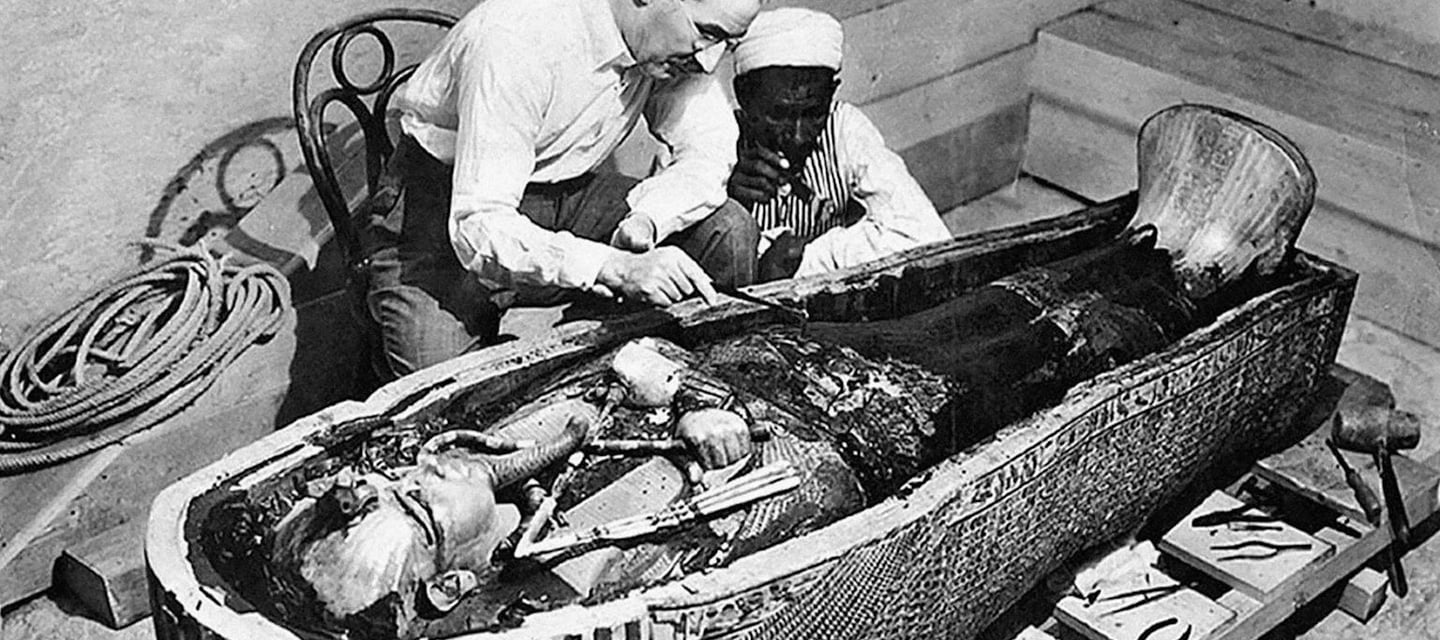The Cursed Dead


The Curse Of Tutankhamun's Tomb
By: Mikh |09/03/2025
The Curse of Tutankhamun’s Tomb: Death, Mystery, and the Pharaoh’s Wrath
In the autumn of 1922, deep in the scorching sands of Egypt’s Valley of the Kings, British archaeologist Howard Carter and his financial backer Lord George Herbert Carnarvon made one of the greatest archaeological discoveries of all time—the virtually untouched tomb of the young Pharaoh Tutankhamun, who had reigned over Egypt more than 3,000 years earlier. What began as a triumph of archaeology quickly became enshrouded in fear, superstition, and whispers of a deadly curse—the “curse of the Pharaohs.”
The Discovery That Shook the World
After years of fruitless searching, Carter finally located the steps leading to Tutankhamun’s tomb in November 1922. Upon entering, his team found treasures of unimaginable wealth: gilded chariots, jeweled statues, and the famous golden death mask that would become an icon of ancient Egypt. Yet, while the world celebrated, locals murmured warnings. Ancient legends claimed that disturbing the rest of a Pharaoh would bring death and misfortune to the intruder.
On the entrance to the tomb, an inscription was reported to read:
“Death shall come on swift wings to him who disturbs the peace of the king.”
Though the exact wording is debated, the idea of a curse gained momentum almost immediately after the tomb’s opening.
The First Death: Lord Carnarvon
The most dramatic event that fueled the legend occurred just months later. In April 1923, Lord Carnarvon, the expedition’s sponsor, was bitten on the cheek by a mosquito. The wound became infected, leading to blood poisoning. He died in Cairo shortly afterward. Newspapers around the world exploded with sensational headlines: “Pharaoh’s Curse Strikes!”
To intensify the mystery, it was said that at the very moment Carnarvon died, the lights in Cairo went out. His beloved dog, kept back home in England, reportedly let out a howl and collapsed dead. The coincidence seemed too chilling to ignore, cementing the belief in the curse.
A Chain of Mysterious Deaths
In the years that followed, a number of individuals connected with the tomb died prematurely, strengthening the legend:
Prince Ali Kamel Fahmy Bey, an Egyptian noble who attended the tomb’s opening, was shot dead by his wife in 1923.
George Jay Gould I, an American financier who visited the tomb, contracted a fever after the visit and died suddenly.
Arthur Mace, a member of Carter’s excavation team, died in 1928 after suffering from illness and weakness.
Richard Bethell, Carter’s secretary, died in 1929 under suspicious circumstances—allegedly smothered to death in his bed. Soon after, Bethell’s father reportedly committed suicide by jumping from a building.
By the early 1930s, newspapers counted more than 20 mysterious deaths linked to the tomb. While some lived long lives afterward, the steady stream of tragedies created a haunting pattern.
Howard Carter: The Uncursed Survivor
Ironically, the man who led the excavation, Howard Carter himself, lived another 17 years after the discovery, dying of natural causes in 1939 at the age of 64. Skeptics often point to this as proof that no curse existed at all. However, for believers, Carter’s survival was explained in different ways—perhaps he was favored by the Pharaoh, or perhaps his death was delayed but still connected to the tomb.
Science vs. Superstition
Modern researchers have proposed scientific explanations for the so-called curse. Some believe the tomb may have contained dangerous molds, fungi, or bacteria sealed for centuries. When the tomb was opened, these pathogens could have entered the lungs or bloodstream of those present, leading to infections and death.
For example, the fungus Aspergillus flavus can produce deadly toxins, and ancient sealed chambers are known to harbor spores. Similarly, air contaminated with ammonia or formaldehyde could cause sudden illness. To people of the 1920s, however, such microbial science was still in its infancy—leaving only the explanation of a curse.
The Psychological Power of Fear
The curse may also have thrived because of human psychology. Many of the supposed victims died from accidents, infections, or natural causes, yet the press connected each death to the tomb. The more people believed in the curse, the more they saw death as evidence of its reality. Fear itself can weaken the body—stress lowers immunity, making individuals more susceptible to disease. In a sense, belief in the curse might have been as deadly as any actual toxin.
A Curse That Lives On
A century later, the “curse of Tutankhamun” continues to fascinate the world. It blends archaeology, superstition, and the universal fear of disturbing the dead. Whether one sees it as coincidence, science, or genuine supernatural vengeance, the legend lingers because it speaks to something primal—the idea that death is not the end, and that those who dare to trespass on sacred ground may pay a terrible price.
Tutankhamun himself was a boy-king, dead at just 19 years old. In life, he wielded only brief power. In death, however, his name has lived for millennia, surrounded by gold, mystery, and fear. And whether the curse was real or imagined, it gave him something extraordinary: the ability to strike awe and terror in the hearts of the living long after his body was laid to rest beneath the sands of Egypt.
Coming Soon
We're on a mission ...........................

Discover our full library of The Theos e-magazines and articles — all completely free to read.
We are a crowdfunded publication, dedicated to sharing knowledge, reflection, and theology with readers around the world.
Your support and donations help us continue offering open, accessible content for everyone, everywhere.
Join us in keeping wisdom free.
@ the theos since 2023 © 2023. All rights reserved.